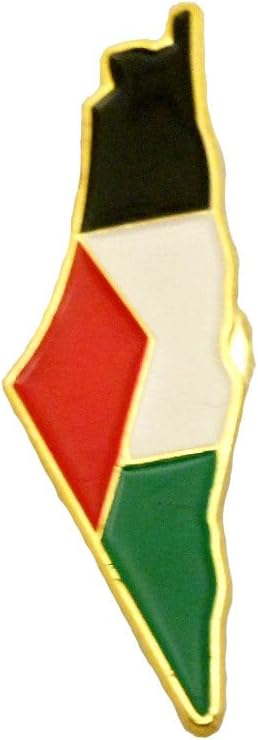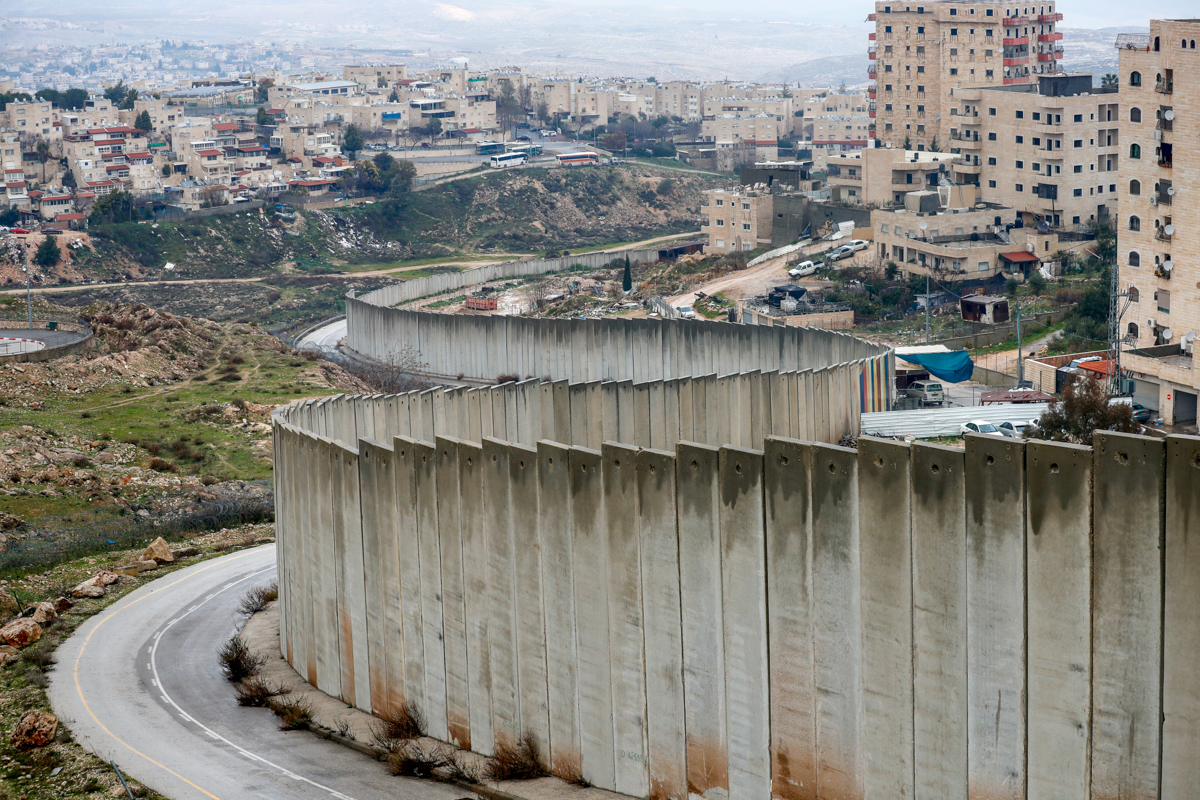Israel-Palestine Peace Plan


Problem Statement
- The land between the Jordan River and the Mediterranean Sea is disputed. Both the Israelis and the Palestinians wish to live there.
Historical Context
- The land is historically important and contains important religious sites for multiple major world religions.
- The current dispute began in the early 20th century when large numbers of Jewish people began to immigrate to the land in order to create a Jewish homeland. During this process, the existing occupants were partially displaced.
- The land is currently divided, with certain areas assigned to Israel and certain areas assigned to Palestine. The areas assigned to Palestine, however, are mostly under Israeli military control.
- The areas assigned to Palestine often contain illegal Israeli settlements, which further decrease the area available to Palestinians and make it difficult to create a contiguous region for Palestine. Preventing a contiguous region from being created appears to be one of the primary goals of the Israeli settlers.
- Israel controls the international border between Palestine and Jordan, as well as the international border between Palestine and Egypt.
- Israel has historically been supported by large cash transfers from the United States to support its economy and military while Palestine has not received the same support.
- The economies of Israel and Palestine are tightly linked. Many Palestinians travel to and trade with Israel for work. Palestinians do not have their own currency and use the Israeli shekel as one of their main currencies.
Observations
- Israel effectively treats the Palestinian territories as if they were already part of Israel, and it seems clear that their eventual goal is to eventually integrate all of the Palestinian territories into Israel. This is clear from the actions of the Israeli settlers, the control of the external borders of Palestine with other countries, as well as statements from Israeli politicians themselves.
- If a separate Palestinian state were created, it would be very small. If this state tried to become independent of the Israeli economy, the people in that state would end up spending a lot of time and effort maintaining duplicate versions of Israeli businesses. Since the state would be small, there may not be very much productive capacity left over to do very many unique or interesting things besides duplicating these businesses.
- The US government currently sends Israel large amounts of money in order to support the Israeli military. The Israeli economy depends on receiving this money to pay salaries, and so ending these transfers could have a significantly negative economic impact. However, it might be possible to transition the payments to be for some other purpose besides the military rather than ending them, in order to reduce the economic impact.
Discussion
This conflict has been around for a long time, with most people who run the state of Israel today not having been around when the state was created. The method by which the state was formed, by using force, appears to have been more common in the past. European settlers used violence and force to create most or all of the countries in the Americas, including the United States and Canada, as well as Australia and various other countries around the world.
It appears that in the case of Israel, as compared to other western countries that were formed by settlers taking land by force, the process of colonization is simply incomplete. Many of the violent things that we see Israel do to the Palestinians today are likely similar to the violent things that would have occurred to native Americans when European colonists first arrived.
While it is true the state was formed by force, it is however important to differentiate between the motives of Jewish settlers that arrived early in the 20th century and the motives of the state of Israel today. Early Jewish settlers had permission from the Ottoman Empire to move there and many were escaping persecution from their home countries. The state of Israel today, however, is much different, and appears to be much more motivated in its actions by internal politics and receiving large incentives in the form of United States military aid.
Possible Solutions
In order to solve the issues in Israel and Palestine, we need to list all of the possible options, and then choose the best option. Here is a list to start with:
- Two-State Solution
- Israel and Palestine remain separate countries.
- One-State Solution
- Israel and Palestine merge into one country.
In order to understand these options, we have to think about what it means for a country to exist. Many people use the word without having precise definition, and simply have an idea of what the word means from knowing many examples. It usually refers to a geographic area with its own government, and which sometimes, but not always, has its own currency, language, and culture. The definition of country also often overlaps with the definition of nation, which often refers to a similar thing but usually seems more focused on the common culture rather than the common geography.
The reality, however, is that the words country and nation can mean whatever we want them to mean. Many people would argue that the countries of Europe are in many ways more like constituent regions of a federal European Union, rather than independent countries. We still call them countries, however, because people want them to be countries.
If it is true, then, that the definitions of country and nation are flexible, and that many arbitrary things can be called a country or a nation, then the difference between a one-state solution and a two-state solution is actually itself somewhat fuzzy and hard to define. It is possible for a single state to contain two constituent cultures, and it is also possible for two separate states to share almost all government functions. Therefore, it seems like the best approach is to initially disregard the issue of how the solution is described and instead focus creating the best governance system for the region, regardless of whether the resulting entity is classified as containing one state or two states.
Restating the Problem

If the distinction between one state and two states is fuzzy and either solution could really mean anything, then we need a different way to describe the problem so that we can discuss actual solutions. We can group the decisions and trade-offs into categories:
- Economic Issues
- The economies of Israel and Palestine can be tightly integrated, with supply chains frequently crossing the boundary between them, or they can be separate, with businesses being duplicated to create a version of each business in each country. These are issues that generally relate to employment and jobs.
- Cultural Issues
- The cultures of Israel and Palestine are currently distinct in many ways, using different languages and having a different religion. Many people in each culture value these differences from the other culture. Efforts can be taken to preserve these differences, while also encouraging the groups to interact so that they have more positive feelings towards each other. In general these issues relate to people's emotions and ego, and attachment to their culture.
Describing these issues in detail is beyond the scope of what I am trying to accomplish with this particular webpage. However, I believe there are some general themes that are likely to be part any solution, or at least any peaceful solution.
Outline of a Solution

- Common Currency
- Israel and Palestine already have tightly-linked economies, with the Palestinians already using the Israeli currency as one of their main currencies. It makes sense for this to continue, though the currency should be managed so that the needs of both Israel and Palestine are addressed in a fair way.
- Free Movement
- Gaza is a very small region to be surrounded by a wall. The West Bank is larger, but Israeli settlers have already purposefully placed their settlements in order to make it difficult to create a contiguous state for the Palestinians. In the long term, it is difficult to see how these walls are not eventually going to come down for practical reasons. It is possible to allow free movement of Israelis and Palestinians over the whole territory while still having other restrictions that prevent local regions from losing their Jewish or Muslim character.
- Common Parliament
- A government is required in order to manage a common currency and a common external border. This should be a representative government that includes both Israelis and Palestinians. There can optionally be additional regional governments that due to their geographic location would tend to either be more Israeli or Palestinian.
- Replacement of United States Military Aid
- The Israeli economy is very dependant on the economic benefits of receiving billions of dollars from the United States in order to support its military. If there truly is peace, then we should expect that this level of military spending is no longer necessary. In order to encourage other parts of the economy to develop, much of this spending should be redirected to be spent on non-military parts of the economy. In particular, spending money on a space industry seems like a good idea given that there is a lot of overlap between the military and space industry in terms of skills required, especially engineering skills.
I think the above list represents a reasonable solution that I suspect is somewhat inevitable anyway. An additional optional suggestion that I would make that is less inevitable, but still a good idea in my opinion, would be to build high speed rail lines linking Tel Aviv, Jerusalem, and Gaza such that they are all directly connected to each other. This could be a symbolic peace project that everyone could be proud of and look forward to using.
Back to homepage